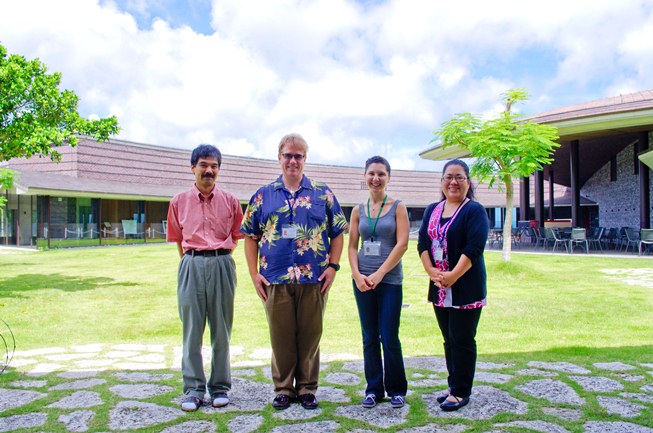FY2011 Annual Report
Formation and Regulation of Neuronal Connectivity Research Unit
Professor David Van Vactor

Abstract
The formation, plasticity and maintenance of synaptic connections are all essential aspects of neural development required to provide functional circuitry. Our unit utilizes the genetic model organism Drosophila to dissect the molecular mechanisms that regulate development of the neuromuscular junction (NMJ) – a highly accessible and well-characterized component of the motor circuit. Due to a wealth of genetic information regarding the pathways and molecules required for NMJ development in Drosophila, this is an ideal system to examine the regulatory machinery that orchestrates and fine-tunes each phase of synaptogenesis and synapse stability. Our current focus is on post-transcriptional regulators of NMJ form and function, with two principle areas of inquiry: (1) the mechanisms by which the RNA-splicesome assembly factor Smn promotes the normal development and maintenance of the NMJ (ongoing project), and (2) the mechanisms by which microRNAs control the precise formation of NMJs during development (project starting in 2012). SMN is a highly conserved gene casual in human Spinal Muscular Atrophy (SMA) – a devastating congenital neurodegenerative disease; however, the mechanisms that link Smn function to normal NMJ assembly are largely a mystery, making a conserved model of the disease attractive for genetic dissection.
1. Staff
- Dr. Takakazu Yokokura, Group Leader
- Tamar Chobanyan, Technical Staff
- Shino Fibbs, Research Administrator
2. Collaborations
3. Activities and Findings
3.1
In the first year of active research in the Van Vactor unit, we have discovered that animals deficient in Smn not only display disease-relevant defects in the mature NMJ architecture, but also display significant changes in the CNS patterns of key transcription factors required for presynaptic neuronal fate determination. By electron microscopy, we find that larval NMJ ultrastructure is altered when Smn is eliminated or when reduced on either side of the synapse. Importantly, we find that these alterations in subsynaptic reticulum (SSR) are partially rescued by enhancing the activity of retrograde transsynaptic BMP signaling, but not by anterograde FGF signaling. However, when Smn deficient animals were examined with transcription factor markers of neuronal cell fate, we found substantial reductions in the expression of multiple markers, a phenotype that can be detected even at early stages of larval development. High content RNA-sequencing experiments are underway to define the conserved targets of Smn, in order to better define the potential effects of Smn on RNA splicing patterns that may underlie these potent phenotypes.
4. Publications
4.1 Journals
4.2 Books and other one-time publications
Nothing to report
4.3 Oral and Poster Presentations
- VanVactor, D. History of Developmental Biology, Developmental Neurobiology Course 2011, Okinawa, Japan, July 18, 2011
- VanVactor, D. Post-transcriptional Regulation of Synapse Asembly, Developmental Neurobiology Course 2011, Okinawa, Japan, July 26, 2011
- Yokokura, T. Modeling SMA in Drosophila, Department of Genetics University of Tokyo, Tokyo, Japan, November 15, 2011
5. Intellectual Property Rights and Other Specific Achievements
Nothing to report
6. Meetings and Events
6.1 International Workshop
- Date: July 17-31, 2011
- Venue: Seaside House/OIST Campus
- Organizers: Drs. David Van Vactor (HMS), Mary Ann Price, Ichiro Masai, and Robert Baughman (OIST) and Akinao Nose (The University of Tokyo)
- Speakers:
- James Briscoe, Group Leader, Division of Developmental Neurobiology, National Institute for Medical Research
- Chris Doe, Principal Investigator, HHMI Institute of Neuroscience, Institute of Molecular Biology, University of Oregon
- Kouzo Kaibuchi, Professor, Dept. of Cell Pharmacology, Nagoya University, Graduate School of Medicine
- Masayuki Miura, Professor, Dept. of Genetics, Graduate School of Pharmaceutical Sciences, The University of Tokyo
- Elke Stein, Associate Professor, Dept. of MCD Biology and Cell Biology and Interdesciplinary Program of Neuroscience, Yale University
- Hitoshi Sakano, Professor, Dept. of Biophysics and Biochemistry Graduate School of Science, The University of Tokyo
- Josh Huang, Charles and Marie Robertson Professor of Neuroscience, Cold Spring Harbor Laboratory
- Akinao Nose, Professor, Dept. of Complexity Science and Engineering, Graduate School of Frontier Sciences, The University of Tokyo
- Yuh Nung Jan, jack and DeLoris Lange Professor Molecular Physiology Investigator, Howard Hughes Medical Institute
Universtiy of California
- Krishnaswamy VijayRaghavan, Senior Professor and Director, the National Centre for Biological Sciences of the Tata Institute of Fundamental Research
- Hitoshi Okamoto, Deputy Director, RIKEN Brain Science Institute; Core Director, Neural Circuit Function Research Core; Senior Team Leader, Lab for Develpmental Gene Regulation
- David Feldheim, Professor, MCD Biology, University of California at Santa Cruz
- Bernardo Sabatini, Professor, Dept. of Neurobiology, Harvard Medical School fo Medicine
- Takeharu Nagai, Professor, Research Institute for Electronic Science, Hokkaido University
- Hideyuki Okano, Professor, Dept. of Physiology, Graduate School of Medicine, Keio University
- Lee Rubin, Professor, Dept. of Stem Cell and Regenerative Biology, Harvard Stem Cell Institute, Harvard University
7. Other
Nothing to report.



